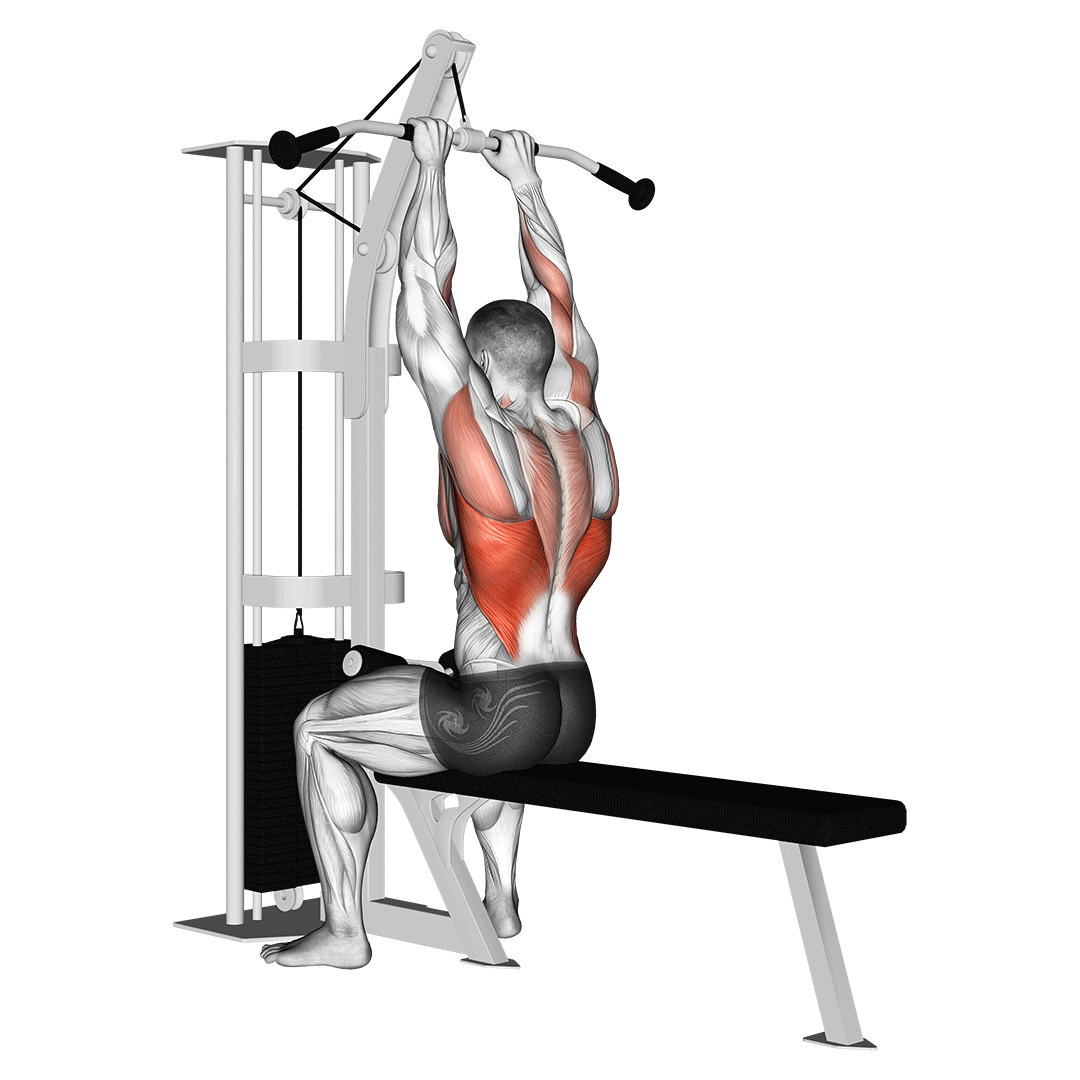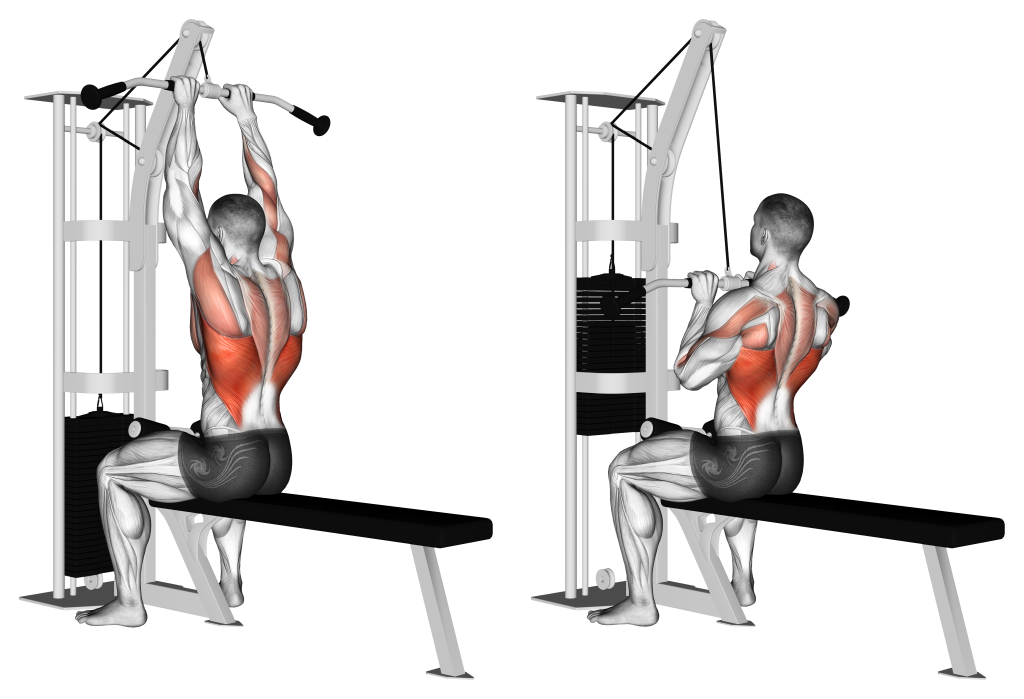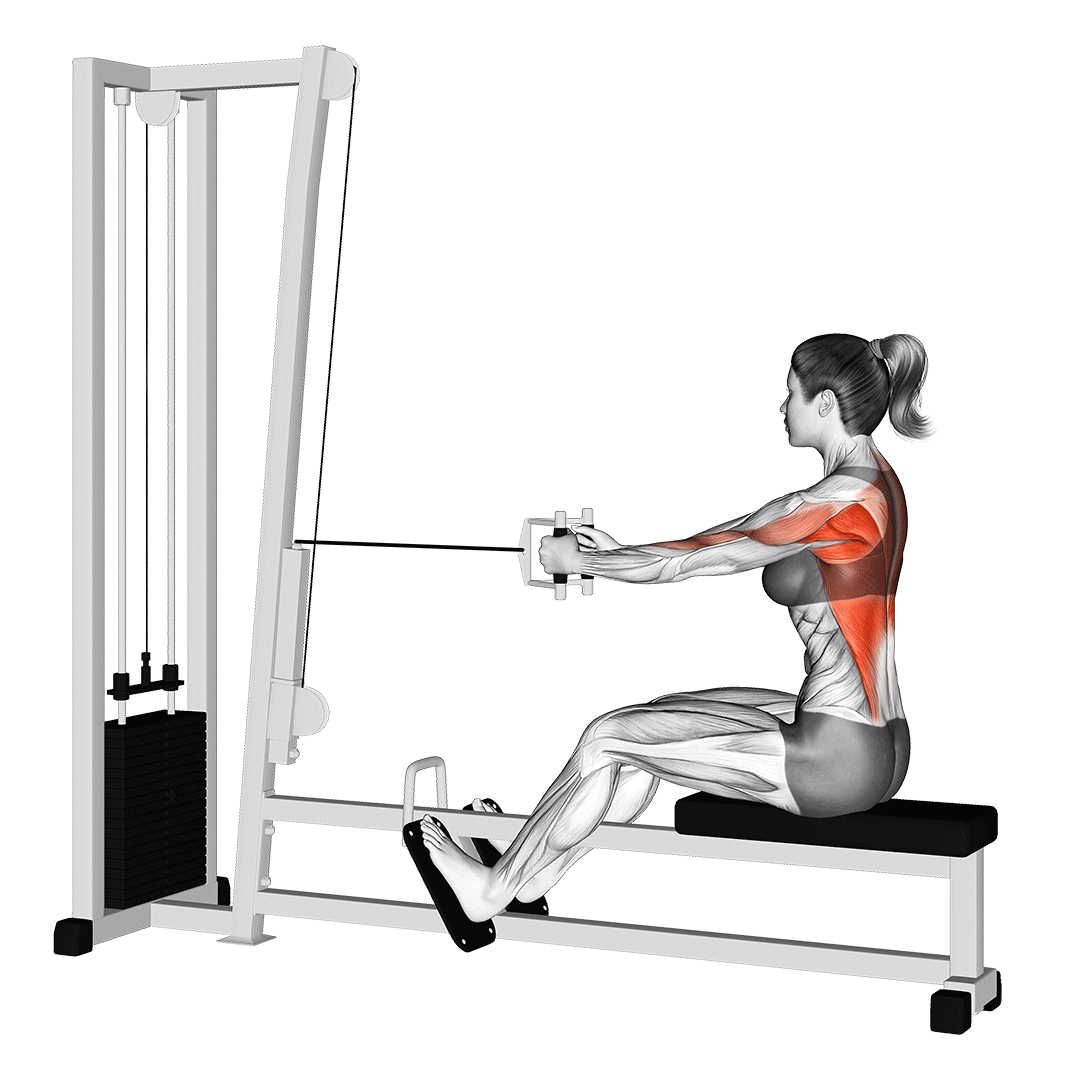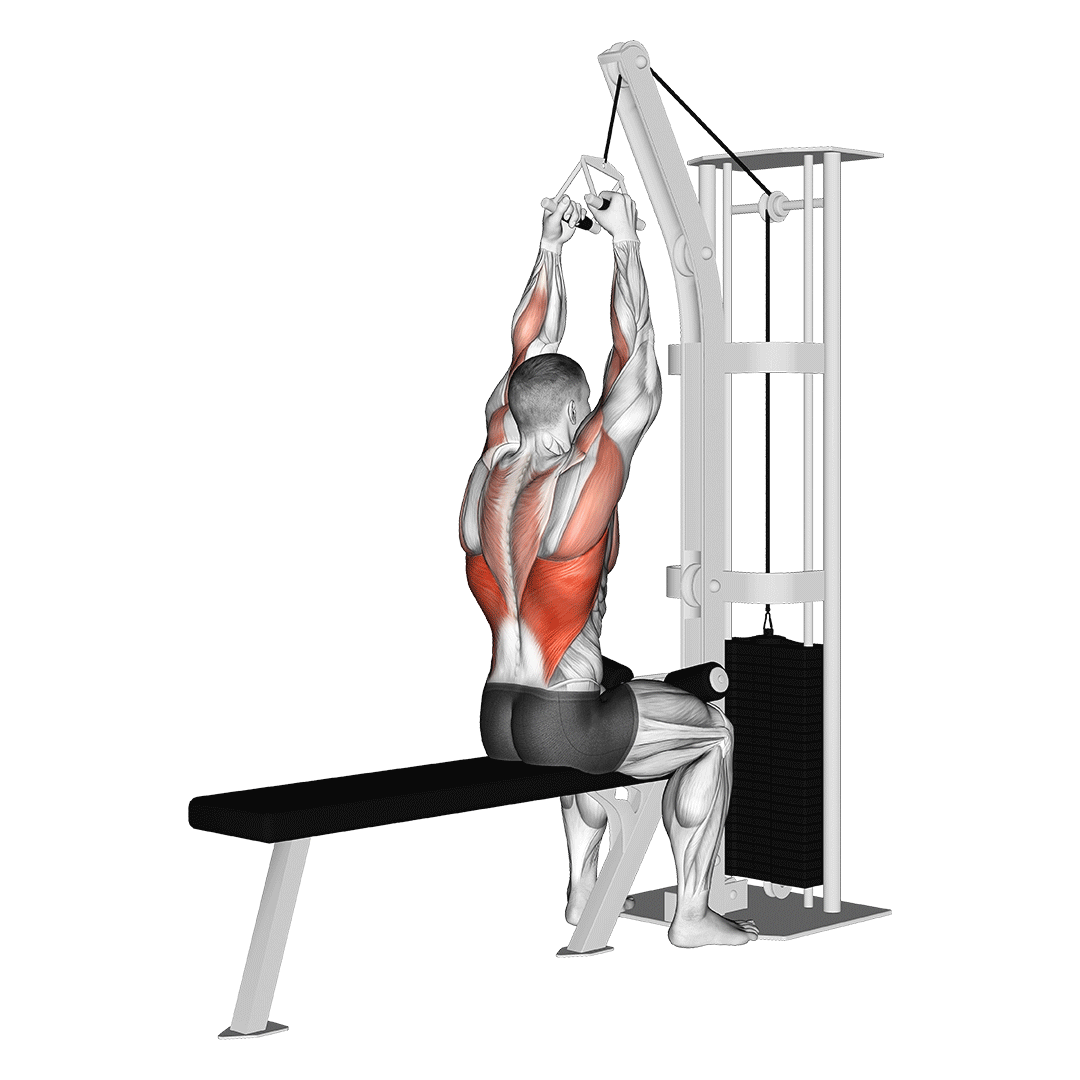Close Grip Lat Pulldown: Benefits, Muscles Worked, and More
Be it for building a wider back or reinforcing your vertical pulling strength, the lat pulldown machine is considered to be a classic exercise renowned for its effectiveness as a back exercise.
Things may even be taken a step further by placing the hands closer than they would ordinarily be - thereby altering the general mechanics of the exercise and allowing for far greater emphasis of the lats and other muscles along the middle of the back.
This seemingly small change in hand width creates the “close grip” or “narrow grip” lat pulldown. It is primarily used for the purposes of building a thicker and stronger back, especially in regards to the latissimus dorsi, lower trapezius and rhomboids as they receive the greatest benefit from a narrower hand width.
What is the Close Grip Lat Pulldown?
The close grip lat pulldown is a multi-joint compound movement that targets the entirety of the back alongside portions of the shoulders and arms.
It is often performed as a more specified substitute to the conventional lat pulldown, and is generally programmed for moderate volume and a moderate level of resistance.

While the close grip lat pulldown can also be done with a neutral grip handle attachment, doing so shifts the emphasis of the movement and can even be considered an entirely separate exercise on its own.
As such, for the purposes of this article, we are specifically speaking of a close grip lat pulldown performed with the traditional straight attachment held in a double overhand grip.
Who Should Do Narrow Grip Lat Pulldowns?
Despite the somewhat larger range of motion, the narrow grip lat pulldown is nonetheless still a light machine-based exercise, and as such is entirely appropriate for even novice lifters.
However, bodybuilders and other hypertrophy-focused lifters will see the most benefit from the close grip lat pulldown, as it is one of the most effective methods of targeting the mid-back with high training volume.
How to do Close Grip Lat Pulldowns
To perform a repetition of the narrow grip lat pulldown, the lifter will seat themselves within the machine, arms stretched overhead as they grip the bar with their hands set shoulder-width apart.

Contracting the core and ensuring that the scapula moves alongside the elbows, the lifter will pull the bar downwards as they draw their elbows towards the sides of the torso - avoiding excessive internal rotation of the shoulders or flaring the elbows out to the sides.
Once the bar is below the lifter’s chin, they will reverse the motion in a slow and controlled manner, extending their arms back upwards as they complete the repetition.
What Muscles Does the Close Grip Lat Pulldown Work?
The close grip lat pulldown is a compound exercise, meaning that more than one muscle group is targeted at the same time.
These muscles are generally classified by the role they play during the exercise, with primary and secondary mover muscles being those that are contracted in a dynamic way - and stabilizer muscles being those that are contracted isometrically.
Primary Mover Muscles
The close grip lat pulldown emphasizes the muscles of the latissimus dorsi, rhomboids, teres muscles and the trapezius - all of which are worked to a capacity beyond that of a conventional lat pulldown.
Secondary Mover Muscles
In addition to the aforementioned muscle groups, the close grip lat pulldown will also work the posterior deltoid head, biceps brachii, brachialis and the brachioradialis.
One may note that the elbow flexor muscles play a larger role in the close grip variation of the lat pulldown, and is directly caused by said closer grip.
Stabilizer Muscles
In terms of isometric contraction, the narrow grip lat pulldown utilizes the forearms, erector spinae and the remaining two sections of the deltoid muscle group.
Benefits of Doing Narrow Grip Lat Pulldowns
The narrow grip lat pulldown is renowned for its effectiveness as a resistance exercise - with a few particular benefits being especially exemplified by the close grip variation.
Bodybuilders, individuals with poor upper back posture and those seeking a thicker and more muscular mid-back will find the following benefits to be particularly useful for their needs.
Excellent for Building Back and Arm Mass
The conventional lat pulldown is already quite popular due to its capacity for building up significant muscle mass throughout the back, shoulders and arms - the close grip variation, with its greater emphasis on the largest muscle groups of the back, and a greater recruitment of the arm’s muscles.
In order to maximize the muscular hypertrophy one may derive from the close grip lat pulldown, it is advised that lifters perform the exercise within the ideal hypertrophy range - namely somewhere between 6-15 repetitions per set.
Pairs Perfectly With Compound Pull Exercises
Being a machine-based exercise, the close grip lat pulldown is particularly easy to pair with heavy free weight exercises that normally make up a pull day workout.
Movements like the dumbbell row, barbell deadlift or even the calisthenic pull–up all match well with the close grip lat pulldown, helping the lifter create more training volume and emphasize the neglected muscle groups of these other compound exercises.
When using the close grip lat pulldown as a secondary or accessory movement, the lifter will want to lower the amount of resistance they are using so as to avoid fatigue and overtraining.
Carryover to Exercises Like Rows, Pull-Ups and Deadlifts
Not only is the narrow grip lat pulldown excellent as an accessory movement, it also helps the lifter perform other exercises entirely on its own.
This is a result of reinforcement of certain mechanics that the lat pulldown shares with other exercises, as well as the fact that it strengthens certain muscles (i.e. the teres major or posterior deltoid head) that are otherwise not directly targeted by said exercises.
In particular, vertical or horizontal pulling movements like rows and pull-ups will see significant carryover from the close grip lat pulldown - as will those that require isometric strength of the deltoids and erector spinae, such as with the deadlift.
Reinforces Scapular Biomechanics
Close grip lat pulldowns reinforce retraction and extension of the scapula, both in terms of actual mobility and with potentiation as a result of muscular strengthening.
Lifters with poor or weak scapular control can use the close grip lat pulldown as a direct way of improving the mechanics related to their scapula - so long as it is safe to do so.
Remember to consult a physician prior to using any exercise as a rehabilitative tool.
Postural Benefits and Rehabilitative Potential
In connection with the previous benefit, the close grip lat pulldown is also quite useful for a range of non-athletic purposes.
The reinforcement of scapular movement alongside strengthening of the entire musculature of the back leads to improvements in posture, especially for those with poor shoulder posture as a stronger posterior deltoid head can aid in setting the shoulders as well.
Even in cases where active physical rehabilitation is needed, the close grip lat pulldown can provide controlled, low-impact and relatively safe physical activity that is comparatively simple in execution.
We do not endorse correcting any injuries or posture issues by yourself, and seeking out the advice of a professional before doing so is best.
Common Close Grip Lat Pulldown Mistakes
Although the narrow grip lat pulldown is relatively simple and easy to master, there are nonetheless some mistakes that are made by even advanced weightlifters.
Despite how widespread they may be, these mistakes should still be corrected so as to create a safer and more effective exercise.
Kipping or Using Excessive Momentum
In almost any resistance exercise, using uncontrolled and excessive momentum can easily lead to poor form, a greatly reduced time under tension and even injuries of an acute nature.
This is all the more true with the close grip lat pulldown, which must be performed in slow and controlled repetitions so as to ensure that a sufficient time under tension is given to all the muscles of the back and arms.
Insufficient Range of Motion
Failing to complete the full range of motion of the pulldown can cause certain muscles to be neglected during the exercise.
It is important to begin each repetition with the arms at nearly full-extension overhead, and to end each repetition with the elbows parallel to the sides of the torso and the bar below the lifter’s eyeline.
Flaring the Elbows
While the elbows do indeed have to move more laterally than with a conventional lat pulldown, the lifter should nonetheless try as much as possible to prevent them from flaring outwards, as doing so pulls the shoulder joint into a potentially injurious position - and makes the movement unnecessarily harder in general.
The best form cue to follow for avoiding elbow flare is to draw the arms behind the torso, rather than simply downwards. This will not only ensure that no elbow flaring occurs, but also help recruit the muscles of the latissimus dorsi as well.
Pulling with the Torso
While there is some clinical evidence that points to a more backwards-leaning torso equating to greater muscular recruitment, actually pulling the bar backwards by moving the upper body is simply poor form.
Doing so can potentially reduce the effectiveness and intensity of the exercise, and potentially injure the lower back if the resistance is particularly strong.
Much of the force pulling the bar should be created by the muscles of the back, with the arms and shoulders playing only a secondary role as well.
Alternatives to the Close Grip Lat Pulldown
If you find the narrow grip lat pulldown to be uncomfortable or just unsuited to meeting your training needs, the following are a few suggestions for potential alternative exercises that can fulfill the lat pulldown’s role in a program.
Cable Seated Rows
Because seated cable rows also place the hands close together and feature a similarly machine-based form of resistance, they are among one of the best alternatives to the close grip lat pulldown.

The sole difference between the two exercises lies in the angle of resistance; generally, the cable seated row is more of a horizontal pulling movement, meaning that more rhomboid and latissimus dorsi recruitment will be utilized.
In addition, the seated cable row is an excellent substitute to the narrow grip pulldown that can allow for greater weight to be moved, and less rotational strain on the shoulders.
Close Neutral Grip Lat Pulldowns
As was mentioned at the start of this article, it is possible to perform the close grip lat pulldown with the use of a neutral grip handle, rather than the standard straight bar.

This further increases the range of motion of the movement, and allows for greater brachioradialis and brachialis recruitment to occur as well. However, these benefits come in exchange for a somewhat lesser involvement of the latissimus dorsi as a portion of the resistance is shifted away from it.
Reverse Grip Lat Pulldowns
For even greater teres and biceps emphasis, lifters may forgo the overhand grip in exchange for an underhand one. This effectively allows for the biceps to be recruited in a far larger range of motion, as well as requires greater scapular retraction in order to perform the exercise correctly.

Note that the reverse grip lat pulldown features a slightly larger risk of injury than its overhand grip counterpart, and a proper warm-up should be followed beforehand.
Frequently Asked Questions (FAQ)
What is the Difference Between Lat Pulldowns and Close Grip Pulldowns?
Both exercises are quite similar, with the primary difference being that the conventional lat pulldown involves a wider than shoulder-width hand position, and the close grip features a shoulder-width one.
This causes the close grip variation to place greater emphasis on the mid-back, and allows the lifter to achieve a larger range of motion.
What is the Best Pulldown Grip for Lats?
For the greatest amount of latissimus dorsi recruitment, EMG data shows that a wide-set and overhand grip is ideal. While this isn’t quite the safest form of lat pulldown, it is nonetheless one that is excellent for building up the lats.
Should You Lean Back When Doing Lat Pulldowns?
While there is some debate as to the correct torso angle, studies show that leaning backwards a bit does increase back muscle recruitment - so long as it remains at that angle, and no swinging of the torso takes place.
A Few Reminders
The close grip lat pulldown is an excellent movement for building back muscle mass and strength - but it shouldn’t be the only exercise for such purposes.
In order to get the most out of the narrow grip lat pulldown, remember that other exercises that feature a similar muscular recruitment pattern should be utilized. Vertical pulling exercises like the pull-up and horizontal pulling movements like the barbell row are a few good examples.
References
1. Andersen, Vidar et al. “Effects of grip width on muscle strength and activation in the lat pull-down.” Journal of strength and conditioning research vol. 28,4 (2014): 1135-42. doi:10.1097/JSC.0000000000000232
2. Lusk, Stephen J et al. “Grip width and forearm orientation effects on muscle activity during the lat pull-down.” Journal of strength and conditioning research vol. 24,7 (2010): 1895-900. doi:10.1519/JSC.0b013e3181ddb0ab
